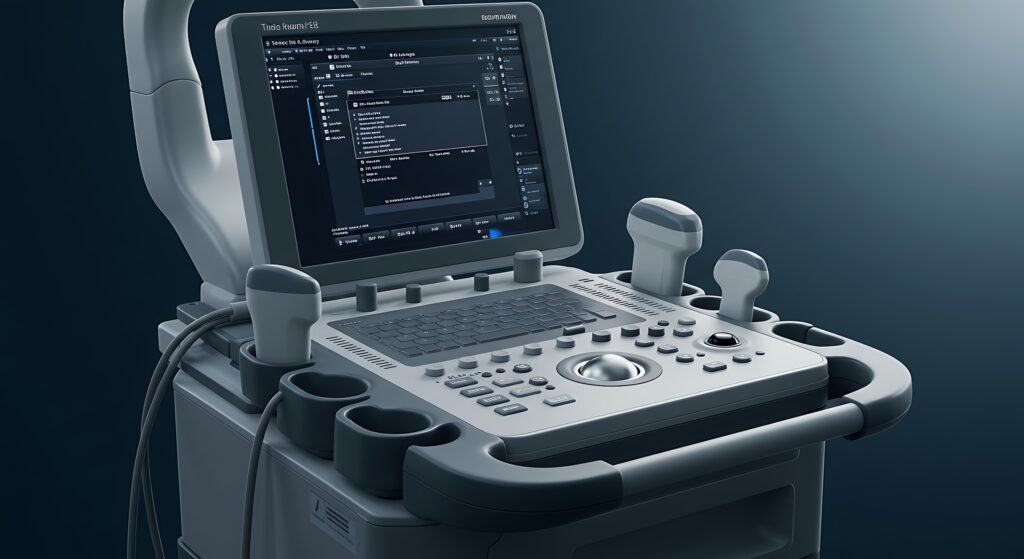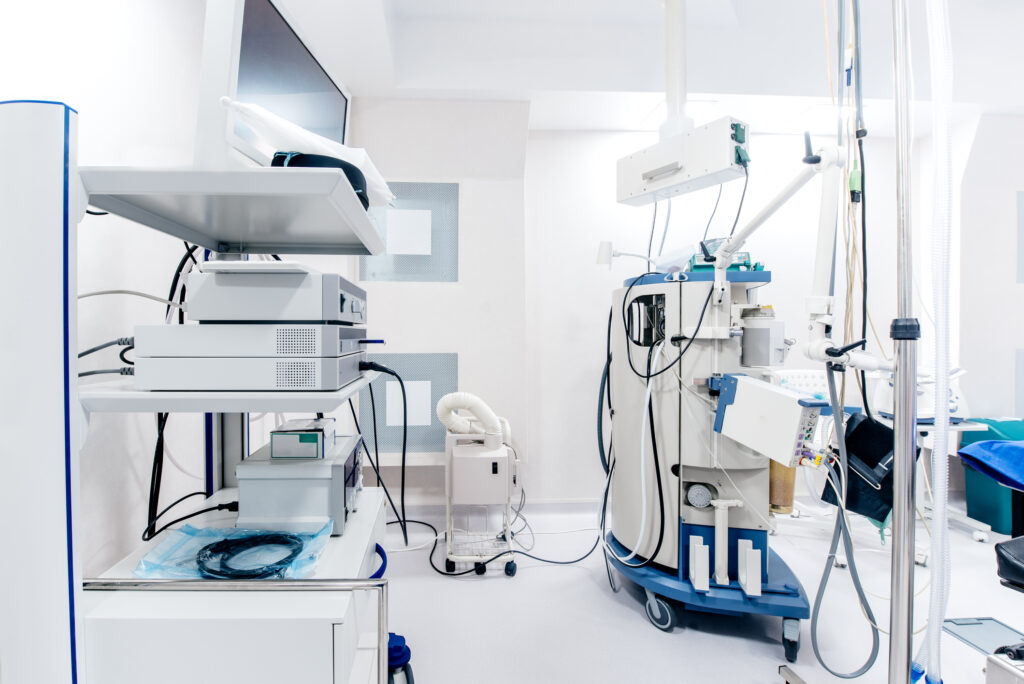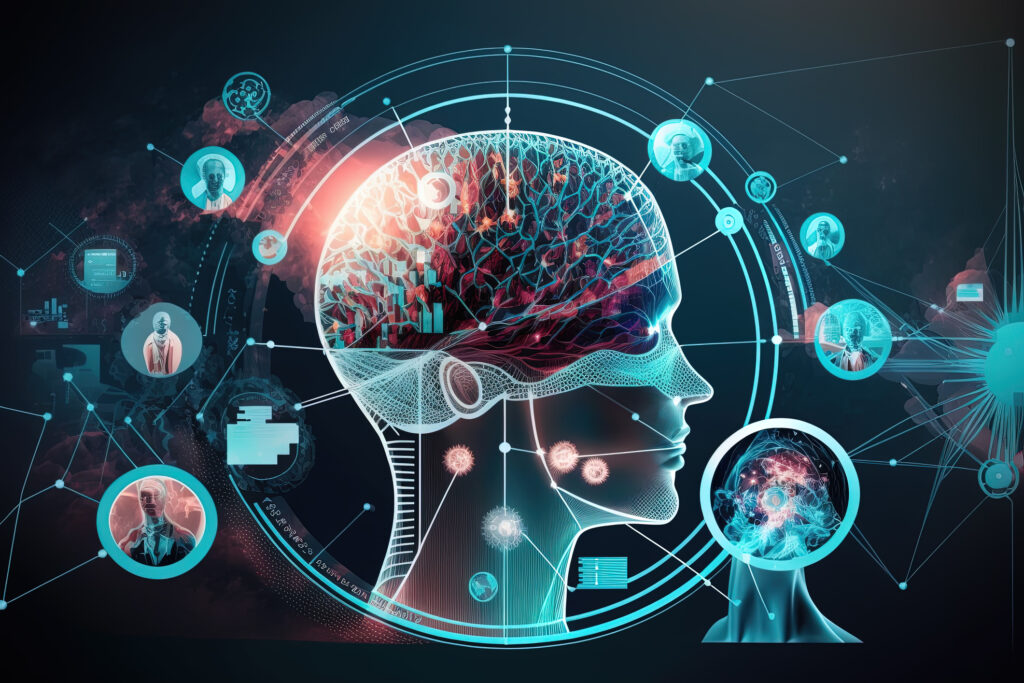Digital tools have revolutionised medical imaging, enhancing diagnostic accuracy, efficiency, and patient care. This article explores various digital tools used in medical imaging, including advanced imaging techniques, software applications, artificial intelligence (AI), and digital health records. The discussion covers the benefits and challenges associated with these tools, highlighting their impact on the healthcare industry.
Introduction to Digital Tools
The field of medical imaging has undergone a significant transformation with the advent of digital tools. These tools have enabled healthcare professionals to diagnose and treat diseases more effectively. This article looks into the various digital tools used in medical imaging and their applications, benefits, and challenges.
Advanced Imaging Techniques
Digital tools have facilitated the development of advanced imaging techniques, improving the quality and precision of medical images.
Computed Tomography (CT) Scans
CT scans use X-ray technology to create detailed cross-sectional images of the body. Digital advancements have led to faster image acquisition, reduced radiation doses, and improved image quality, which aid in accurate diagnosis and treatment planning.
Magnetic Resonance Imaging (MRI)
MRI uses magnetic fields and radio waves to produce detailed images of organs and tissues. Digital enhancements in MRI technology have resulted in higher-resolution images, shorter scan times, and advanced imaging sequences, making it a vital tool in diagnosing complex conditions.
Ultrasound Imaging
Ultrasound uses sound waves to produce images of soft tissues and organs. Digital advancements have improved image clarity, enabling better visualisation of structures. Portable ultrasound devices and 3D/4D imaging capabilities have expanded the scope of ultrasound in various medical fields.
Positron Emission Tomography (PET) Scans
PET scans use radioactive tracers to detect metabolic activity in tissues. Digital innovations have enhanced their sensitivity and specificity, making them invaluable in oncology, neurology, and cardiology.
Software Applications in Medical Imaging
Software applications play a crucial role in interpreting, analysing, and managing medical images.
Picture Archiving and Communication Systems (PACS)
PACS stores, retrieves, manages, and shares medical images digitally. This system eliminates the need for physical film, reducing storage costs and improving accessibility for healthcare professionals.
Radiology Information Systems (RIS)
RIS are used to manage patient data and imaging records. Integration with PACS allows for seamless workflow management, improving efficiency and reducing the likelihood of errors.
Image Processing and Analysis Software
Advanced software applications are used to process and analyse medical images, enhancing diagnostic accuracy. These tools can assist in identifying abnormalities, measuring structures, and creating 3D reconstructions.
Artificial Intelligence in Medical Imaging
AI has emerged as a game-changer in medical imaging, offering numerous benefits and opening new avenues for research and clinical practice.
AI-Powered Image Analysis
AI algorithms can analyse medical images with high precision, assisting radiologists in detecting abnormalities and diagnosing conditions. These tools can identify patterns and anomalies that the human eye may miss.
Machine Learning Models
Based on imaging data, machine learning models can predict disease progression and treatment outcomes. These models are trained on large datasets, enabling them to provide personalised treatment recommendations.
Natural Language Processing (NLP)
NLP is used to extract meaningful information from radiology reports and medical records. This technology can enhance clinical decision-making by providing insights into patient history and previous diagnoses.
Challenges of AI in Medical Imaging
The implementation of AI in medical imaging faces challenges, including data privacy concerns, the need for large annotated datasets, and the risk of algorithmic bias. Addressing these challenges is crucial for the successful integration of AI into clinical practice.
Digital Health Records
Digital health records have transformed the way medical information is stored and accessed, impacting medical imaging significantly.
Electronic Health Records (EHR)
EHR systems store comprehensive patient data, including medical history, lab results, and imaging records. Integration with imaging systems ensures that healthcare providers have access to complete patient information, facilitating informed decision-making.
Health Information Exchange (HIE)
HIE systems enable the secure exchange of health information across different healthcare organisations. This capability improves coordination of care and ensures that imaging records are readily available to authorised personnel.
Benefits of Digital Health Records
Digital health records offer benefits such as improved data accessibility, enhanced patient safety, and streamlined administrative processes. These systems reduce the risk of errors and ensure that imaging data is consistently updated and available.
Impact on Patient Care
The integration of digital tools in medical imaging has significantly impacted patient care, offering numerous advantages.
Improved Diagnostic Accuracy
Advanced imaging techniques and AI-powered tools enhance diagnostic accuracy, leading to better patient outcomes. Early detection of diseases allows for timely intervention and treatment.
Enhanced Efficiency
Digital tools streamline workflow processes, reducing the time required for image acquisition, analysis, and reporting. This efficiency translates to shorter patient waiting times and more timely diagnoses.
Patient Safety
Digital tools minimise the risk of errors and reduce radiation exposure through optimised imaging protocols. AI can also assist in identifying potential complications early, improving patient safety.
Personalised Treatment
AI and machine learning models enable personalised treatment plans based on individual patient data. This approach improves the effectiveness of treatments and enhances patient satisfaction.
Challenges and Future Directions
While digital tools have brought about significant advancements in medical imaging, several challenges remain.
Data Security and Privacy
The digitalisation of medical imaging data raises concerns about data security and privacy. Ensuring that patient information is protected from breaches and unauthorised access is paramount.
Integration and Interoperability
Integrating various digital tools and ensuring interoperability between different systems can be challenging. Standardisation of data formats and protocols is essential to facilitate seamless communication and data exchange.
Cost and Accessibility
Implementing advanced digital tools can be costly, posing a barrier for some healthcare facilities. It is crucial to ensure that these tools are accessible to all patients, regardless of their location or economic status.
Continuous Education and Training
Healthcare professionals must be continuously educated and trained to use digital medical imaging tools effectively. Keeping up with technological advancements and understanding how to interpret and use digital data is essential.
Conclusion
Digital tools have revolutionised medical imaging, offering numerous benefits in terms of diagnostic accuracy, efficiency, and patient care. Advanced imaging techniques, software applications, AI, and digital health records have collectively transformed the field. However, addressing challenges such as data security, integration, cost, and education is essential for advancing digital medical imaging tools. The future of medical imaging lies in the successful integration of these technologies, ensuring that they are accessible, secure, and effectively utilised to improve patient outcomes.
| Digital Tool | Description | Key Benefits |
| Computed Tomography (CT) Scans | Uses X-ray technology to create detailed cross-sectional images of the body. | Higher resolution images, shorter scan times, and advanced imaging sequences. |
| Magnetic Resonance Imaging (MRI) | Utilises magnetic fields and radio waves to produce detailed images of organs and tissues. | Improved image clarity, portable devices, and 3D/4D imaging capabilities. |
| Ultrasound Imaging | Uses sound waves to produce images of soft tissues and organs. | Eliminates physical film, reduces storage costs, and improves accessibility. |
| Positron Emission Tomography (PET) Scans | Utilises radioactive tracers to detect metabolic activity in tissues. | Enhanced sensitivity and specificity, invaluable in oncology, neurology, and cardiology. |
| Picture Archiving and Communication Systems (PACS) | Enhanced diagnostic accuracy, assists in identifying abnormalities, measuring structures, and 3D reconstructions. | Eliminates physical film, reduces storage costs, improves accessibility. |
| Radiology Information Systems (RIS) | Manages patient data and imaging records, integrated with PACS. | Seamless workflow management, improved efficiency, reduced errors. |
| Image Processing and Analysis Software | Advanced software for processing and analysing medical images. | Assists radiologists, detects abnormalities, and identifies patterns and anomalies. |
| AI-Powered Image Analysis | AI algorithms that analyse medical images with high precision. | Provides personalised treatment recommendations and is trained on large datasets. |
| Machine Learning Models | Predicts disease progression and treatment outcomes based on imaging data. | Improves coordination of care, and ensures imaging records are available to authorised personnel. |
| Natural Language Processing (NLP) | Extracts meaningful information from radiology reports and medical records. | Improved data accessibility, enhanced patient safety, and streamlined administrative processes. |
| Electronic Health Records (EHR) | Stores comprehensive patient data, including medical history and imaging records. | Enhances clinical decision-making and provides insights into patient history and previous diagnoses. |
| Health Information Exchange (HIE) | Secure exchange of health information across different healthcare organisations. | Improves coordination of care and ensures imaging records are available to authorised personnel. |
Q&A on Digital Tools in Medical Imaging
Q1: What are the primary benefits of using digital tools in medical imaging?
A1: Digital tools in medical imaging offer numerous benefits, including improved diagnostic accuracy, enhanced efficiency, better patient safety, and the ability to provide personalised treatment plans. These tools streamline workflow processes, reduce the time required for image acquisition and analysis, and minimise the risk of errors. They also enable early detection of diseases, leading to timely interventions and improved patient outcomes.
Q2: How have advanced imaging techniques improved with digital tools?
A2: Advanced imaging techniques such as CT scans, MRI, ultrasound, and PET scans have seen significant improvements with digital tools. These advancements include faster image acquisition, reduced radiation doses, higher resolution images, shorter scan times, and enhanced imaging sequences. These improvements contribute to more precise and detailed images, aiding in accurate diagnosis and treatment planning.
Q3: What role do software applications play in medical imaging?
A3: Software applications are crucial in medical imaging for interpreting, analysing, and managing medical images. Key applications include Picture Archiving and Communication Systems (PACS), which store and share images digitally, and Radiology Information Systems (RIS), which manage patient data and imaging records. Image processing and analysis software also enhances diagnostic accuracy by identifying abnormalities, measuring structures, and creating 3D reconstructions.
Q4: How is artificial intelligence (AI) utilised in medical imaging?
A4: AI is utilised in medical imaging through AI-powered image analysis, machine learning models, and natural language processing (NLP). AI algorithms analyse medical images thoroughly, assisting radiologists in detecting abnormalities and diagnosing conditions. Machine learning models predict disease progression and treatment outcomes based on imaging data, providing personalised treatment recommendations. NLP extracts meaningful information from radiology reports and medical records, enhancing clinical decision-making.
Q5: What are the challenges associated with implementing AI in medical imaging?
A5: Implementing AI in medical imaging faces several challenges, including data privacy concerns, the need for large annotated datasets, and the risk of algorithmic bias. Ensuring data security and patient confidentiality is paramount, and obtaining sufficient high-quality data for training AI models can be difficult. Addressing potential biases in AI algorithms is crucial to ensure fair and accurate results.
Q6: How have digital health records impacted medical imaging?
A6: Digital health records, including Electronic Health Records (EHR) and Health Information Exchange (HIE) systems, have transformed medical imaging by improving data accessibility and enhancing patient care. EHR systems store comprehensive patient data, ensuring that healthcare providers can access complete information and facilitate informed decision-making. HIE systems enable the secure exchange of health information across different healthcare organisations, improving coordination of care and ensuring imaging records are readily available to authorised personnel.
Q7: What are the key benefits of digital health records in medical imaging?
A7: The key benefits of digital health records in medical imaging include improved data accessibility, enhanced patient safety, and streamlined administrative processes. These systems reduce the risk of errors, ensure that imaging data is consistently updated and available, and enable better coordination of care. They also support comprehensive patient records, which are crucial for accurate diagnosis and effective treatment planning.
Q8: What impact have digital tools had on patient care in medical imaging?
A8: Digital tools have significantly improved patient care in medical imaging by enhancing diagnostic accuracy, efficiency, and safety. Advanced imaging techniques and AI-powered tools enable early detection of diseases and more accurate diagnoses, leading to better patient outcomes. Digital tools also streamline workflow processes, reducing waiting times and ensuring timely diagnoses. Additionally, they minimise radiation exposure through optimised imaging protocols and support personalised treatment plans based on individual patient data.
Q9: What are some of the challenges in integrating digital tools in medical imaging?
A9: Integrating digital tools in medical imaging presents challenges such as data security and privacy concerns, the need for system interoperability, high implementation costs, and the necessity for continuous education and training. Ensuring that patient information is protected from breaches and unauthorised access is crucial. Achieving interoperability between different systems requires standardising data formats and protocols. The cost of implementing advanced digital tools can be a barrier for some healthcare facilities, and healthcare professionals must be continuously educated and trained to use these tools effectively.
Q10: What is the future of digital tools in medical imaging?
A10: The future of digital tools in medical imaging lies in the successful integration of advanced technologies such as AI, machine learning, and digital health records. Ensuring these tools are accessible, secure, and effectively utilised will improve diagnostic accuracy, efficiency, and patient care. Continuous advancements in imaging techniques, software applications, and AI algorithms will further enhance the capabilities of medical imaging. Addressing challenges such as data security, interoperability, and education will be essential to fully realise the potential of digital tools in transforming healthcare.
Disclaimer
The content presented in this article, “The Role of Digital Tools in Medical Imaging,” is intended for informational and educational purposes only. It does not constitute medical, professional, or legal advice. While efforts have been made to ensure accuracy and reliability, Open Medscience makes no guarantees or warranties, express or implied, regarding the completeness, accuracy, suitability, or applicability of any information contained herein.
This article is not a substitute for professional medical advice, diagnosis, or treatment. Always seek the guidance of a qualified healthcare professional with any questions you may have regarding a medical condition or the use of digital tools in clinical settings. Never disregard professional advice or delay in seeking it because of something you have read on this website.
The inclusion of specific technologies, systems, or tools does not imply endorsement by Open Medscience. Readers are advised to verify all information independently and consult relevant specialists before making any decisions related to healthcare technologies or practices.
Open Medscience shall not be held liable for any loss, damage, or adverse outcomes resulting from reliance on the content of this article.
You are here: home » diagnostic medical imaging blog »



